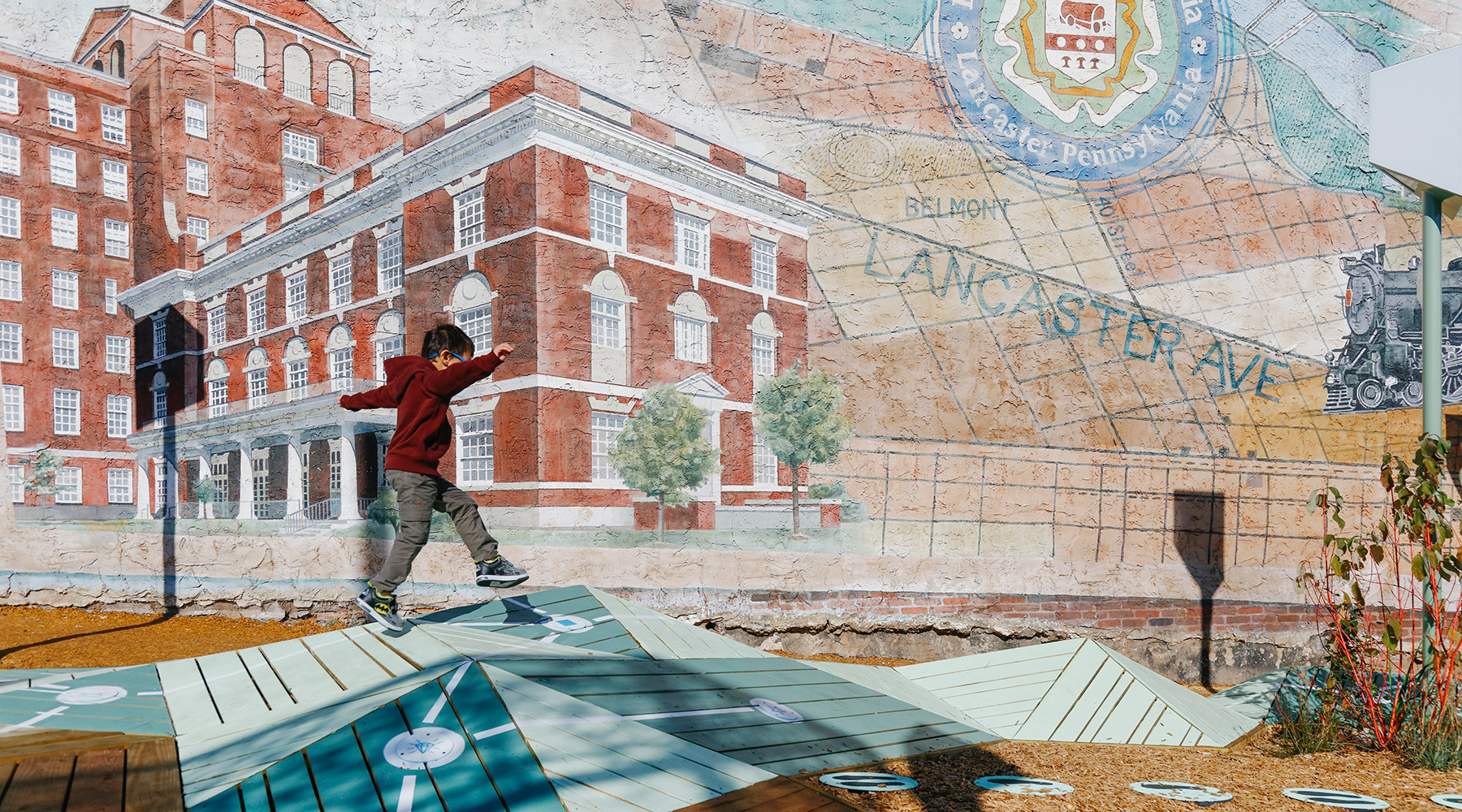Philadelphia, United States, 2018

‘Urban Thinkscape’ aimed to co-design an existing public space into an environment for playful learning for children and their caregivers through a cluster of interactive installations. The process included pre- and post-implementation observations and surveys at both the ‘Urban Thinkscape’ site and a standard playground in the same area. This measured if and how the new installations affected interaction between children and caregivers, in comparison to the nearby playground.
Community members trained as data collectors conducted the so-called ‘naturalistic observations’. For each caregiver-child group that stopped in the site area, the data collector filled out an observation sheet. The observation protocol provided for the analysis of conversational content such as the use of numerical language; talk about colours, letters a sounds; the nature of the verbal interaction; and non-verbal interaction like laughing, touching and pointing. They also collected data about the use of technology, amount of physical activity and the caregiver’s communication style.
Survey data was compared based on two initial hypotheses: that caregivers and children would have more verbal engagement and interaction after the completion of the project and in comparison to the other playground; and that at the ‘Urban Thinkscape’ site their conversations would reflect more on the installations’ topics.
